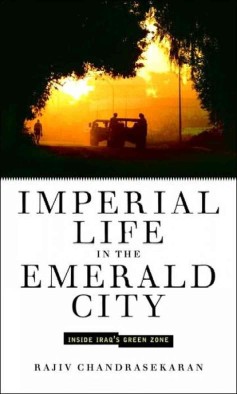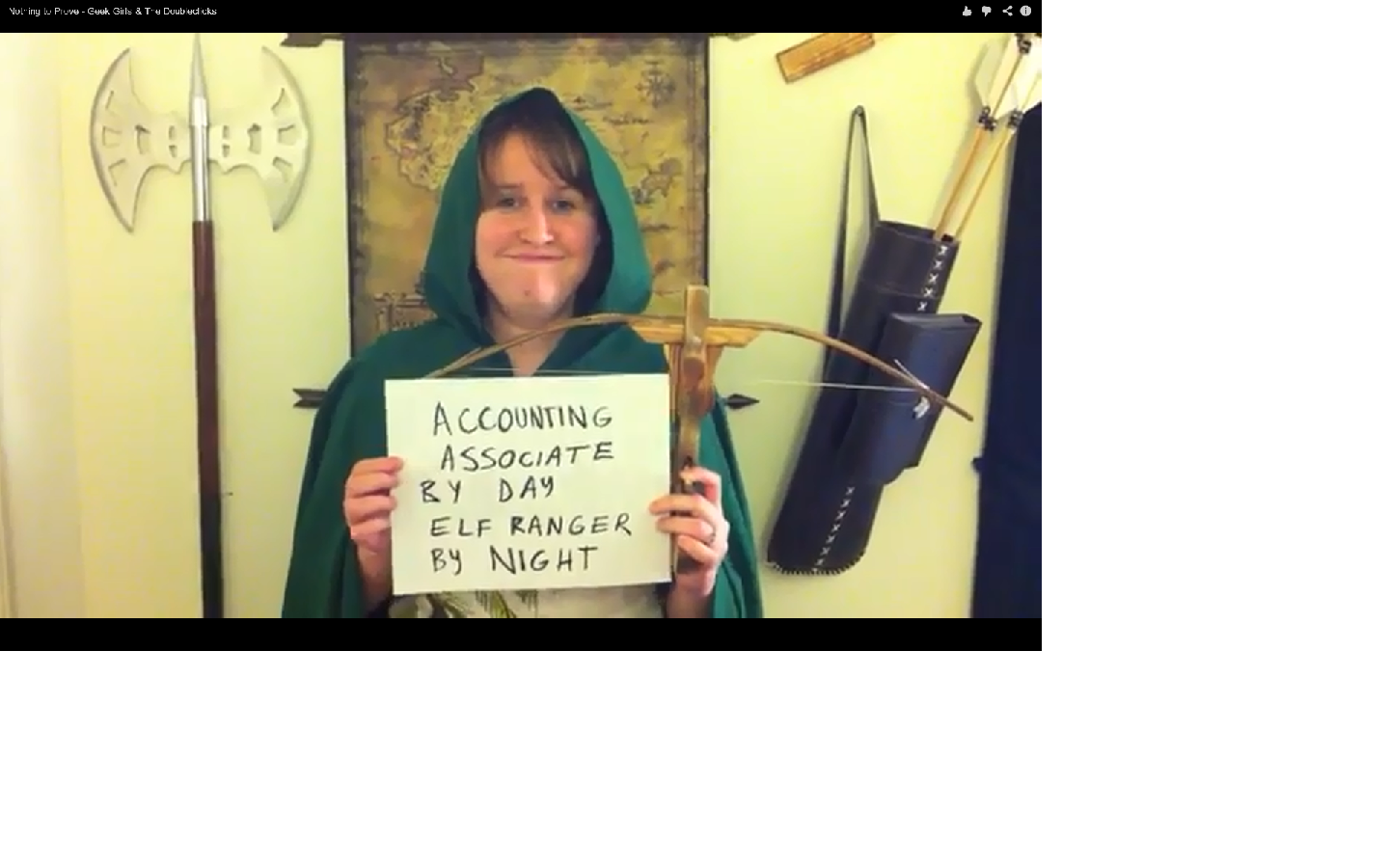Category Archives: Uncategorized
Sowing Dragon’s Teeth
I just finished an eye-opening book today: ‘Imperial Life in the Emerald City’ by Rajiv Chandrasekaran. It’s a journalist’s memoir of the occupation of Iraq which focuses not on the military aspects of the invasion but rather on the abject failure of planning and policy in the ensuing occupation. It’s a clear and well annotated account of a story that’s never been reported to the American people, except in the most vague of terms.
The Bush administration filled the CPA (Coalition Provisional Authority) with inept cronies, in preference to skilled non-partisan diplomats from the State Department. To rebuild Iraq’s health care system, they replaced an experienced ex-Navy physician-administator who had coordinated health care on a Kurdish mission with a conservative Michigan party hack, who devoted his time in Iraq to privatizing the country’s state-run pharmaceutical distribution system; an agency which due to looting had no drugs to distribute in the first place.
Six days before the hand-over of sovereignty to the Iraq-interim government, 2.4 BILLION dollars in US monies, IN CASH, specifically $100 bills, was transported into Baghdad, and transferred into purposes as yet unaccounted for. An additional 6 billion more in conventional money transfers can be added to that sum for the month preceding, also never accounted for. And those figures are a tiny fraction of the total squandered in the money-pit of the occupation.
The incompetance and corruption was everywhere. In instance after instance reported in Chandrasekaran’s book, it is clear that the CPA was focused on removing that which once actually served the Iraqi people, Saddam’s socialist infrastructure, rather than rebuilding that which two gulf wars had destroyed: the power grid, water system, and public infrastructure.
The occupation of Iraq completely destabilized that nation, led to the death of tens of thousands of their people, and now ten years after, has left a vacuum of tribal and civil warfare that continues with no end in sight. The greatest irony is that the Neo-conservative cronies in charge of the occupation are the ones most at fault for engendering the power of the present-day Shiite-led majority government.
Prior to the 2003 invasion of Iraq it could not be demonstrated that Al Quaida held ANY sway or influence in Iraq. Today they definitely ARE waging civil war in open revolt in Fallujah, while the government does what it can with the US trained and armed Iraqi
forces. As a nation, it seems we’re always “sewing dragon’s teeth” abroad. Oh, well. At least the oil keeps flowing.
I experienced this book as an audiobook offering from Audible, narrated by Ray Porter, whose work is very fine indeed. Non-fiction narration can often be terribly dry and disinteresting, but Porter’s cadences, voicings, and use of foreign accents where called for kept this book alive and fascinating throughout.
Ann of Two Thousand Days
 Ann of Two Thousand Days
Ann of Two Thousand Days
As I go about my daily tasks–editing, running, cooking, what have you–I find myself increasingly obsessed with going to Mars. This has been going on for more than a month, ever since I got the Round 2 notification from Mars One in late December–a fact which played havoc with my carefully thought-out New Year’s resolutions. I had to revise them, and that did not make me happy. Contrariwise, it did add happiness and excitement and many wasted hours of dreaming to my day-to-day life.
Along about New Year’s, I also read an insightful post (contact me if you want details, as I’m simply too lazy to look them up right now) that in brief stated, “Don’t make a weighing-you-down list of things to do, like chores; instead, make a list of how you want to be, and tailor the list to achieving those “to be” goals. To be, instead of to do. I want to be a Martian. (Incidentally, I also want to be athletic, confident, and uncluttered–but when I think about it, Martian covers it all.)
So, I want to be a Martian. I passed my physical in January. The next step (it’s now early February) is an interview, probably sometime after April. I can’t wait that long. I have to wait that long. Grrrrrrr. The longer the wait, the more I do the “negative talking thing” to myself. I see a list of “Five People I Want to Go to Mars With” and I’m not on it. What do they know that I don’t know? Others get interviews; I send out feelers and get nothing. (I admit, self-promotion is not one of my fortés.) Other applicants are rocket scientists, physicists, mechanics, astrobiologists. I’m a … and here I draw a blank. I tell myself to start learning basic mechanics–that seems like a necessary skill. But when my outside weather display stops giving me outdoor temperatures on a really cold day and needs more than a change of batteries, I hand it to my husband, the mechanical genius. I should learn from him, I really should. Instead, I walk out to the front porch and feel the temperature. Yes, still too cold to run.
Should I be lucky (not skilled, not smart–remember what I said about self-promotion?) enough to go to Round 3, I’ll have to figure out why they want me, other than being an older person with limited life expectancy anyway. Having decent people skills and being a nice person seem like poor skills to list on a resume to be an astronaut. I can kind of garden in sandy soil, but that doesn’t seem much of a recommendation either, although it might have application to the dusty soil of Mars. I wish I’d paid more attention to tenth-grade chemistry class, the one that convinced me I wasn’t as smart as I thought I was.

And then Round 4, which consists of (roughly) two thousand days of training. That would be wonderful, magnificent, marvelous! I could train, I could learn anything they want to teach me. Astrophysics? No sweat. Microbiology? You got it. And then my New Year’s resolution hits: Why wait? Ack! How can I narrow it down? Maybe I should go fix my Aerogrow, the hydroponic garden that sits on my counter–or did, till it broke. You can fix it, Ann; it’s not rocket science. Yet.
(Elliott–if you’re reading this and you come home to a torn apart, nonfunctional, machine sitting on the kitchen counter and a despondent wife scratching her head, feel free to–gently, quietly–help put it back together.)
Cedar Key Nomadic New Year Convergence
We spent a week at Cedar Key, getting home yesterday feeling rested and contented. We have a special friendship with a community of people who live the peripatetic life: They are nomadic, you see, working jobs they can perform most anywhere, most of them. Oh, some of these folks self-describe as retired, but in truth are roaming, seeking, and working at all manner of things along their paths. Many of these folks converged at Cedar Key for New Year’s Eve a year ago, and the same tribe (with many new representatives) did so again last week.
It was a colder winter there this year, and with a pair of rainy days that had our little camper, The LeSharo, dripping a bit from around the ceiling vent, but this didn’t dampen our spirits. We walked, and ran, and did yoga during the week, and made new friends every day of our stay.
a pair of rainy days that had our little camper, The LeSharo, dripping a bit from around the ceiling vent, but this didn’t dampen our spirits. We walked, and ran, and did yoga during the week, and made new friends every day of our stay.
We participated in ‘Bar Wars’ for the evening of NYE; an event where contestants made and served cocktails of every description, sharing favorite recipes. I fixed Vodka Gummy Worms, with hilarious results. Pro tip: I should have started them three DAYS earlier for best results. They are far too chewy after only 3 hours.
We read, and read, and read in our snug little camper on the slack hours, and dined here and there, sharing fixings and condiments in the rolling home of our friends. It’s easy to imagine doing this sort of thing when it’s time to hang up my clinical job, oh, many years from now.
In recent reading, I’ve learned that human beings were massively changed by the advent of agriculture, being fixed to tilled land, their nomadic ways arrested by cleaving to one place. For one thing, sharing basic needs was curtailed. Acquisitiveness, ownership, and guarding one’s “lot” came to replace general sharing of everything. Human “classes” came into being. Agriculture, while it sustains more complex civilizations, does not improve the welfare of all, but balances the improvements enjoyed by landowners and their “priests” on the backs of the balance of the closed tribe, and fully excludes “The Other”, all those wanderers who exist outside the fringes of the one tribe. Workers and Warriors support Landowners and Priests, unified in the task of excluding and defending against The Other, even if they all share the same basic DNA. Peace cannot be a part of this construct. Sadly, it always comes down to Us and Them.
It is so ironic that in The Book of Genesis it says that Adam and Eve were cast out of The Garden, to toil ever after in their own damned garden. God’s Garden was the free range, where Wanderers gathered of The Plenty, and shared freely.
Modern motorhome nomads tend to emulate God’s Garden and ancient nomads because it rapidly builds Community among transients in the moment of being together. It is warm, and lovely, and just the best thing ever. I’ll give you an instance: One afternoon this past week, there was a spontaneous “Swap Meet”: people brought things they’d found themselves carrying around that they had no use for. People laid stuff out, and people just admired, and conversed, and tried on old hats, and laughed over hip-waders and cookware. And eventually, everything was picked up, and stowed away in EACH OTHERS ROLLING HOMES! If any money changed hands in this process, I never saw it happen.
Nomads are like that. I just love being around them. As a lesson for the New Year, and all the years ahead, it’s one to bear in mind: Be open to others, share what you have, and love beyond the limits of your own “tribe”. If you drop your fences, and wander “outside”, you will be astonished at what you receive, and the freedom that you find.
On My Way to Mars, One Step at a Time

I am one of the 1,058 worldwide applicants who were chosen to continue in Round 2 of the selection process for Mars One (and apparently one of only 20 or so over the age of 55 in the United States).
How do I feel about this? Excited, hands down.
But perhaps I’m in denial. Why me? I’m not *that* special. The whole thing is kind of unreal, hard to believe. I have to pinch myself. Maybe they only had 1,100 applicants and 42 of them screwed up the application by mistyping their own email address? Maybe their PR guys told them to accept a bunch of old people so they wouldn’t get sued? Whatever the reason, whether there were only 2,000 applications or 200,000, I’m still in the running–and I’m taking it seriously. Wheeeee!
Why Mars? Well, duh: Because it’s there. And it’s part of a big mystery, a puzzle waiting to be solved. Do I really believe there are aliens there? Not really. Alien lifeforms? Well, maybe fungus or something, though I think it’s unlikely. My science knowledge is somewhat sketchy. We won’t know till we get there, will we? (And by that time, I hope I’ve soaked up a bit more knowledge about such things. And mechanical stuff. Have I mentioned that’s not my forté?)
I’m okay with it being a one-way trip, I really am. That’s not to say, I won’t miss Elliott–I will, enormously. And I’ll really miss the girls. How will their lives turn out? Will they be happy? I’ll never have the chance to hold grandchildren, but maybe I’ll be a part of an opportunity for those potential grandchildren, or somebody else’s grandchildren. We’re doing a pretty good job messing up this planet; I’d like to think I could help get started on the right track on another one where we’re maybe not so insensitive to what’s around us. (Note to daughters: Do not go out and get pregnant on my account…No! No no no no no no no!)
But that’s assuming I even make it. I will be in the neighborhood of 72 years old at the time this takes off, and probably somewhat akin to the canary in the coal mine. After all, if a 72-year-old dies trying to repair a whatchamacallit off the whosit somewhere out in deep space on a long leash (remember, mechanical stuff is not my forté), everyone can say I had a long, happy, exciting life. If a 23-year-old dies, it’s a PR nightmare. (Who, off the Challenger, do you remember most? The young happy teacher and mother of young kids or the older professionals? Can you even name someone other than Christa McAuliffe?)
Why me? Maybe because I don’t have an agenda, other than seeing this whole thing work on Mars. Not just work, I’ll say thrive. I want the Mars One colony to thrive on Mars. I don’t want to populate it with evangelican Christian babies (or fill in whatever group you want); I don’t want to exploit it more than necessary; I don’t care whether people are Democrats or Republicans. Okay, yes, I do have an agenda: to make it worthy of a dream for someone else to follow. Idealistic? Heck, yes.
Or maybe because they were desperate? Nah, I’d rather think the selection panel was intelligent, discriminating, and persnickety. Yeah, I would.
Mars One is a nonprofit organization geared toward getting humans on Mars in about 2024. You can find out more information at http://www.mars-one.com, and they have a fundraiser at Indiegogo, http://www.indiegogo.com/projects/mars-one-first-private-mars-mission-in-2018. (Fundraising will be, I suspect, a key part of applicants’ ability to progress…though I’m not a salesperson. Go look, see if you think it’s worthwhile, fund if you do. There.)
I’ll keep you posted…eventually. In the meantime, if you see me wearing a bracelet that says WWMD and I’m doing something particularly crazy, it does NOT mean What Would Morons Do.
Wholock!
This is beyond good!
And how the video effects were produced:
A Hourney to Jaco, Costa Rica
My wife, daughters and I traveled to Costa Rica a few weeks ago on a first family vacation in some years. More often when we do this, there’s one or some of Ann’s kin at the other end of the road. The last time I think there was a wedding, too, out in Oregon. If I’ve misplaced some intervening journey, please someone refresh my memory. However, this trip was for us as a nuclear family, sans extensions, to the beach town of Jaco, CR, pronounced Haco.
The centerpiece of Jaco, for us was, hands down, the zip-line adventure. Many photographs were taken. My face may have betrayed a wee bit of anxiety at times. For a pilot, I am surprisingly uncomfortable with heights experienced without the benefit of wings, ailerons and rudder.
A close second for me was simply walking, exploring a road up into the mountains overlooking the Pacific, or strolling into Jaco town along the beachfront, watching surfer bums. We also rode the buses down to Manuel Antonio National Park, where Ann and Kelly saw a monkey in the wild, and I communed with yet another iguana. Iguanas are curious, and rather sociable if you offer to take their picture. It might be natural vanity on their part.
Such a beautiful coast line! One can’t help but imagine retiring there, but, alas, my trip was marred by two episodes of pilfering by the locals. The first was losing my cellphone to (most probably) a Costa Rican airport security worker in San Juan. I also foolishly left a backpack out of sight on our bus ride to the park, and it was spirited away by a clever thief. That cost me two pairs of glasses, and my swimsuit! A neighbor here had warned us of the casual attitude toward and presence of larceny in C.R., and I can attest, it’s true!
Enjoy these pictures!
Geek Grrls Totally Rock…
…and deserve their dreams, the same as you.
Posted as the devoted father of a wonderful pair of grrl geeks…
Yateveo Salad
A Recipe for Yateveo Salad
4-6 yellow shoots of new growth Yateveo leaves
2 green onions
1/2 red pepper
1 stalk white celery
1 black avocado
Take the usual precautions in gathering the Yateveo shoots, by first exhausting the plant for safe harvest. It is worth noting that a tree that is still somewhat “frisky” yields more flavorful leaves. Be careful!
Dice or shred all ingredients. Toss together with vinegar and oil. Arrange on small side plates, and garnish lightly with sawdust. Serves 8 Greys, 2-4 members of the Chromatocracy, or 1 Prefect, unless suddenly appropriated by an Apocryphal Man.
Jasper Fforde has reviewed this recipe, and proclaimed it “good”.
If this recipe puzzles you, please find and read Fforde’s ‘Shades of Grey’. You’re welcome!
Addiction Is a Terrible Thing…No, Wait…
(Note: This is a humorous look at the way our brains become obsessed with whatever it is that is currently the target. Please do not take this as an instruction manual, a criticism, a direction to follow, or anything else other than a wry observation of myself and my inherent quirks.)
 Sooooo, yesterday I posted two things on Facebook: a photo of a heart-shaped mushroom I found in my yard, and a photo of me holding a print copy of my book, Tilted Windmills. Both of those photos showed up online about 18 hours ago, within about half an hour of each other.
Sooooo, yesterday I posted two things on Facebook: a photo of a heart-shaped mushroom I found in my yard, and a photo of me holding a print copy of my book, Tilted Windmills. Both of those photos showed up online about 18 hours ago, within about half an hour of each other.
Within minutes, somebody–five somebodys–liked the mushroom (it was the first photo to go up). Within half an hour or so, I had seven likes. Then my book photo went up. (It is beside the point that I think this is one of the few good pictures of me. Elliott took it–after insisting I wear a collared shirt–I chose his, and we won’t talk about his manly physique as he took the photo–and he did a great job.) Moments went by, and five more likes popped up. My heart swelled. It overflowed. Somebody–five somebodies–like me!
(it was the first photo to go up). Within half an hour or so, I had seven likes. Then my book photo went up. (It is beside the point that I think this is one of the few good pictures of me. Elliott took it–after insisting I wear a collared shirt–I chose his, and we won’t talk about his manly physique as he took the photo–and he did a great job.) Moments went by, and five more likes popped up. My heart swelled. It overflowed. Somebody–five somebodies–like me!
So every half hour or so–despite a good movie, despite cooking and cleaning, despite a life apart from Facebook–I checked my Facebook page. And with every like, my ego blossomed and expanded way beyond its normal boundaries. At latest count, after about 21 hours, I had a total of 35 comments and a whopping 62 likes. (We are ignoring the fact that I made comments myself, and that the same people might have liked both. Why let reality intrude?)
And sad to say, I still want more. More, more! What can I do to get more of these ego-boosting affirmations? No wonder people live on Facebook (or social media of choice). It’s all about me, we all think.
There must be something I can do to stay on top of the heap, keep my beaming smile right there in front of everybody. Despite all this unwarranted popularity, I still want more likes, and there’s a voice in the back of my head that tells me if I edit my photo, it’ll pop back to the top of everyone’s list. Maybe more people will see it. Maybe I’ll get more likes. Thankfully, common sense intrudes before I do anything silly, but I realize that getting these likes is an addiction. It’s pleasing to us, and what’s not to like about that? We always think we deserve more pleasure in our lives, and everybody I know works very hard at whatever it is they do, and they truly deserve a happier life (not that most aren’t happy, but you get the idea).
In the end, all those “me’s” probably cancel each other out. It’s not about *any* of us, it’s about *all* of us. A group, a whole, a community. Getting likes is a way of saying, “I’m part of this community, a valued member.” We all are.
Now maybe I can post a link to this blog–that’ll do it. And a photo of me, maybe showing a little cleavage this time… Oh it’s a slippery slope. Addiction like this is insidious. We rationalize that what we want will be good for everybody. I mean, who wouldn’t want to see more cleavage? (Don’t answer that.)
Or perhaps this is my fifteen minutes of fame and *blink* it’s over.
I wonder what I can photograph tomorrow?







































